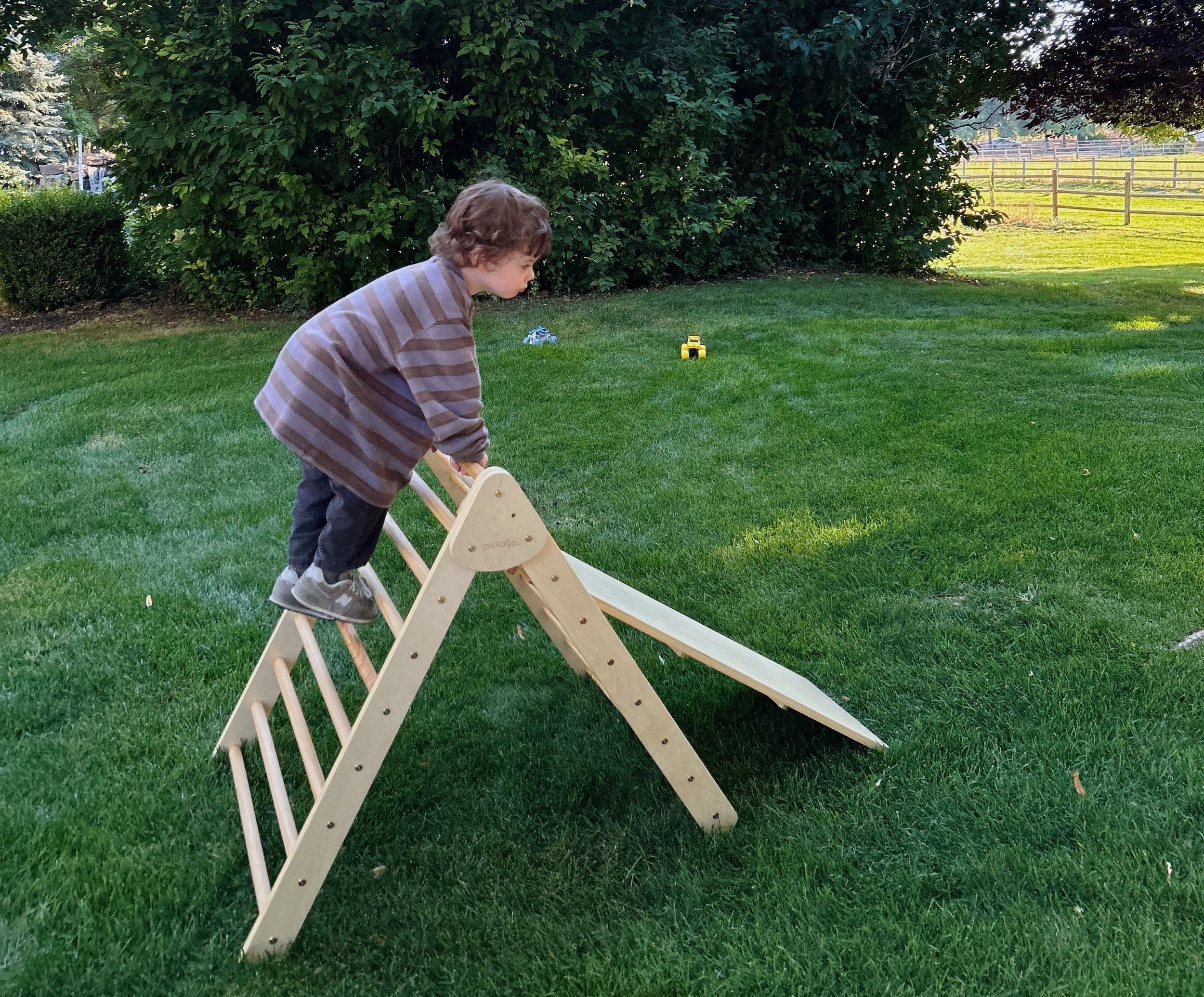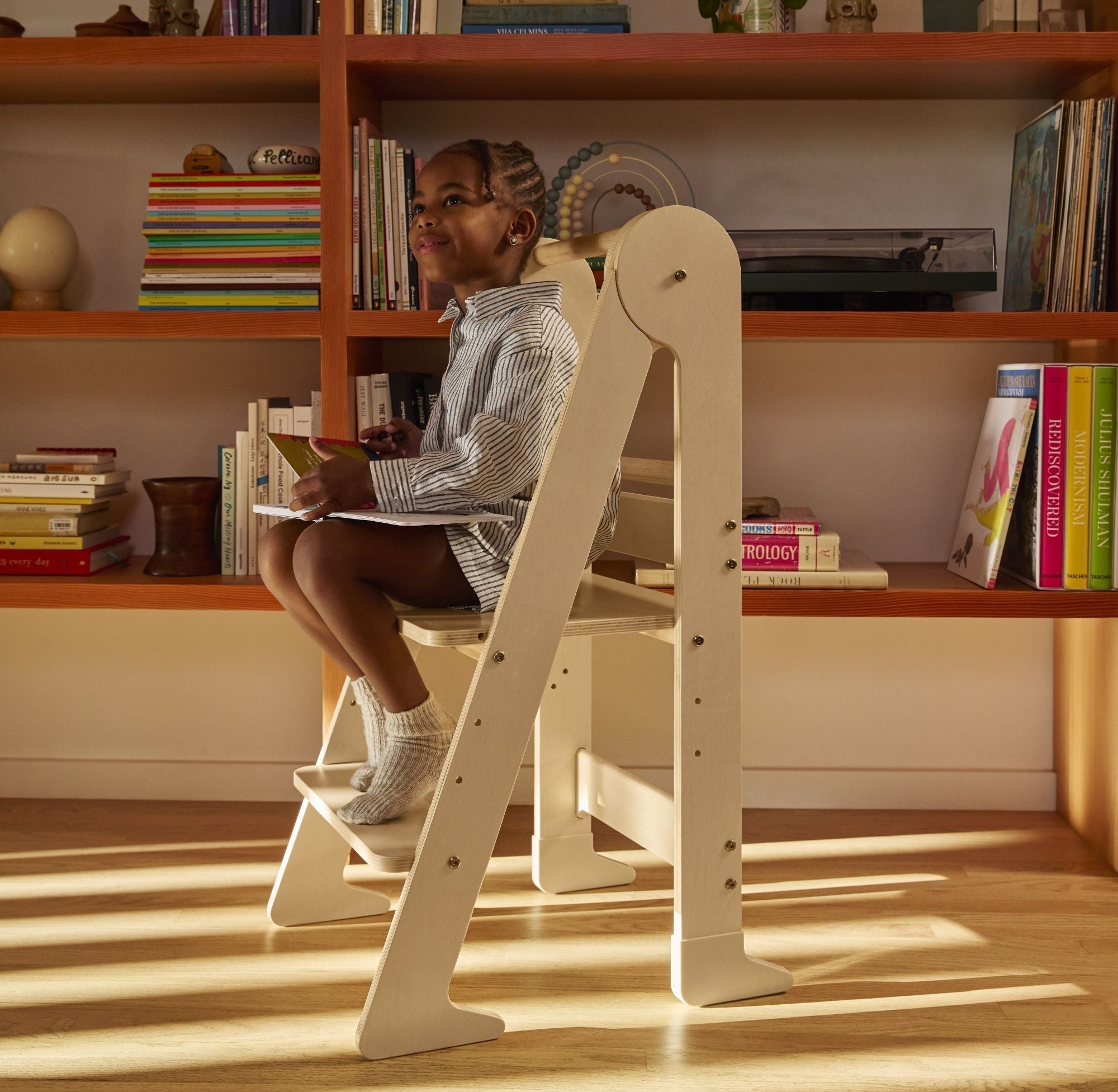"Ok, time for supper!" you call cheerfully and ask your child to turn off the tablet. Your sweet child turns into a monster, screaming, yelling, and crying that they want more screen time. You sigh and wonder, "Can screen time cause tantrums?"
Digital devices like smartphones and tablets play a prominent role in modern life. Parenting young children in the age of screens poses new challenges. Setting boundaries for screen time, managing negative impacts, and teaching media literacy are just a few new jobs for parents.

What can you do if you think your child spends too much time playing games and watching videos, and it's impacting their behavior? I spoke to Lauren Mosback, a licensed professional counselor and behavior specialist, to learn more about why screentime can cause issues, when children might need a digital detox, and how to do it.
How Much Screen Time is Too Much for Kids?
For children younger than 2 years old, experts recommend no screentime at all beyond video calls. Children ages 2-5 should have screentime limited to 1 hour per weekday and 3 hours per day on weekends. For ages 6 and up, the American Academy of Child & Adolescent Psychiatry doesn't offer hard and fast rules, but simply recommends limiting screen time.
Other organizations, like the American Academy of Pediatrics, don't offer a set number of hours for school-aged children either. So, what can parents do?
It's important to recognize the negative impacts that spending too much time on screens can have on children. Experts at the AACAP say that too much screen time can result in lower academic achievement, less time spent outdoors or reading, weight problems, mood problems, and poor self-image, among others.
It's up to parents to recognize signs that children are feeling the effects of too much screen time. What should you look for?
Signs of Too Much Screen Time for Kids
We've all been there. Perhaps your child was sick, or you were slammed with work, and you let them have a little more TV or tablet time than normal. Soon, they're used to excessive screen time, and their attitude is starting to show it. What are the signs your child needs a screen time detox, or at the very least, to cut back considerably?
Mosback said that every child is different, but there are some common signs. Here's what to look for:
- Irritability or meltdowns when asked to turn off screens (yes, screen time can cause tantrums!) This might look like whining or complaints when screen time is over.
- Increased anxiety or mood swings after prolonged screen use. For example, your child may be moodier than usual, or show signs of anxiety such as stomachaches.
- Difficulty sleeping, including trouble falling or staying asleep.
- Loss of interest in other activities. especially outdoor play, reading, or hobbies they once enjoyed. Instead, they may ask to watch TV or do their favorite screen time activity.
- Decreased attention span or focus, particularly during school or homework.
- Physical complaints such as headaches, eye strain, or lack of energy.
-
Social withdrawal or reluctance to engage in face-to-face interactions.
Mosback explained, "These behaviors may signal that your child’s brain and body need a reset — a chance to slow down, reconnect with their environment, and re-engage with real-life, hands-on experiences."
What Should a Screen Time Detox Look Like?
Mosback says that you don't have to eliminate screen time completely to gain benefits. Instead, a digital detox might just mean "mindfully reducing screen use to create space for healthier rhythms and more meaningful experiences," she said.
Steps for a Successful Children's Digital Detox
According to Mosback, you can use the following steps to make your detox a success:
Start with a Conversation
Talk with your child about why you’re taking a break and how it can help them feel better, calmer, and more energized. Be open and encouraging, and make it a team effort rather than a punishment.
You might even share with your child how screen time affects you. Sharing your own experiences can help your child see that you're not targeting them. Instead, it's something everyone needs to think about and moderate.
Set a Realistic Goal
Depending on your child’s age and current habits, this might mean limiting screens to one hour a day. Or, you might choose a few designated screen-free days each week.
If your child currently has no limits, consider starting with an achievable goal (like 2 hours per day) and slowly tapering down screen time week by week or day by day.
If you're looking for more specific advice on how to set limits, read our blog on a Montessori approach to screen time.

Spend Quality Time Together
One of the best ways to ease the transition away from screens is to reconnect through activities you enjoy together. Play a board game, color together, read books aloud, or do a fun craft project.
Head outside for a nature walk, go stargazing, have a picnic, or simply kick a ball around the yard. Spending a little extra time together, especially at the outset of your new limits, can help avoid your child feeling punished with the new rules.
Also, invite your child into family routines such as cooking dinner or cleaning. Doing chores can be fun, especially for young children. Plus, chores help build their self-confidence and independence. These moments spent together not only fill the space left by screens but also strengthen your bond and remind your child that life offline can be full of joy.
Offer Engaging Alternatives
Kids are more likely to succeed if they have something fun and stimulating to do instead. In addition to family activities, encourage them to explore their interests. You can make a list of activities they can choose from, such as riding a bike, playing pretend, or coloring.
You might also invite your child to try new hobbies. Try new crafts like watercolor painting, embroidery, or crochet. Or, take a stab at gardening, doing science experiments, or making puppets.
Your child might feel bored sometimes, and that's ok! Slowly, your child will build up their tolerance to boredom. Remember, screens are always stimulating, so it may take some time for your child to get used to the sensation of not being engaged at every moment.
Need more ideas? Check out our list of screen-free activities for every age and stage.
Create Screen-Free Routines
Incorporate simple daily routines that don’t involve screens. Some you can try are a family walk after dinner, a quiet morning play session, or an outdoor “adventure time” after school.
Model Healthy Tech Habits
Children learn by watching. So, it helps when parents and caregivers set an example with balanced screen use themselves.
You can model this by talking about how you monitor your use with your phone's weekly screen report. Or, you can follow rules like "no phones at dinner" or "no screens 30 minutes before bed." Mention how you're following these rules in passing so your child can see what screen time moderation looks like for adults.
How to Use Parental Controls for Screen Time
As a mom, I've learned to use technology to my advantage. Parental controls like screen time limits can help reduce battles over screen time. Instead of you saying, "time's up!" the device lets your child know it's time. You can create limits in your device's settings or install a parental controls app. You can also use a timer or alarm if you prefer.
A digital detox is also the perfect time to talk with your child about digital media literacy. You can touch on topics such as "What's fact and fiction online?" and media messaging. This can help your child develop essential skills to successfully navigate screen time.
The Importance of Play and How Screens Can Interfere
Mosback says that screen time can deprive children of vital development opportunities. "Play is the foundation of childhood," she says. "Through play, children process emotions, build social skills, develop problem-solving abilities, and strengthen their sense of identity." When screen time replaces play, especially unstructured play or outdoor play, kids miss out.
Mosback went on to explain that "Unstructured play allows children to explore and create without a specific goal or set of instructions. It supports brain development, resilience, and creativity. When children have the freedom to play on their own terms, they learn how to manage frustration, navigate relationships, and build confidence."
"Outdoor play adds even more benefits," Mosback says. Spending time in nature can reduce stress and anxiety and improve your child's mood. Plus, your child is more likely to get exercise when they're outside.
Children also gain other benefits when playing outside. Mosback says time outdoors "...provides natural sensory input that calms the nervous system. Plus, exposure to sunlight helps regulate sleep."
Inspire Your Child's Digital Detox
Setting a limit for screen time is easier when your child enjoys other activities. One way to boost your child's interest in nature and physical activity outdoors is Mosback's book, Let’s Grow on an Adventure. This beautifully illustrated story invites children to discover the wonders of the natural world, connect with their strengths, and imagine the many adventures that await them outdoors.
In a world where screens are always within reach, let’s make sure our children are also reaching for sunshine, soil, stories, and simple moments of connection. Taking steps to reduce your child's screen time can improve their mood, reduce anxiety, and ensure their developmental needs are met. Are you ready for a digital detox? Let us know in the comments below.
Looking for more tips on children's mental health? You can follow Lauren Mosback at lelise_counselor.












Leave a comment
This site is protected by hCaptcha and the hCaptcha Privacy Policy and Terms of Service apply.